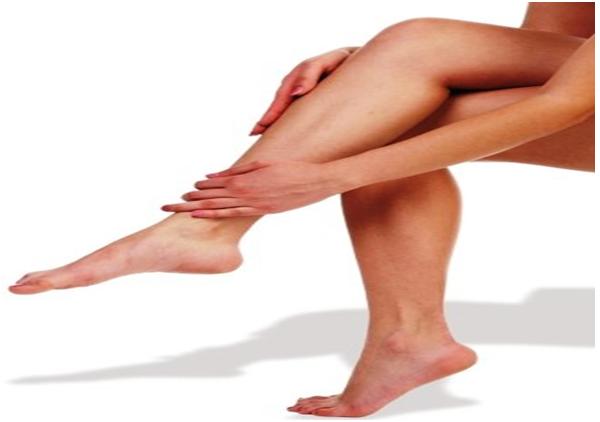
Our body demands that we maintain the thickness of blood at the right level as thick blood can easily lead to blood clots while thin blood can cause bleeding. In general, when there is reduced muscular movements, thick blood can easily coagulate. During the movement of muscles, the blood platelets break and stay away from clinging together, thus preventing the formation of blood clots.
Blood clot can form either in the superficial veins or in deep veins. The blood clots that form in deep veins of lower legs or thighs are termed Deep Vein Thrombosis (DVT). Swelling is a common indication that happens when there is less muscular movement for a prolonged period. The major factors that cause deep vein thrombosis include immobility, obesity, age, drugs, or person having inborn blood clotting tendency like Thrombophilia. Deep vein thrombosis can also form silently in the leg muscles without any symptoms.
Blood clots inside the veins are not dangerous as long as they don’t break up and move through the blood stream. If a blood clot breaks, it can travel through the blood stream and lodge in vital organs such as heart, lungs or brain.The treatment for deep vein thrombosis usually focuses on blood clot deposits in lungs, a condition known as pulmonary embolism. When the blood clot is deposited in lungs, it reduces the blood supply to lung tissues and prevents exchange of oxygen and carbon dioxide. This condition can damage normal breathing.
Causes
Too much of blood coagulation is the major cause for deep vein thrombosis. Tiny blood clots are often formed and are broken down by the body regularly. The types of food we eat, affects the blood thickness and its coagulation capability. So, it is essential to maintain the coagulant factor at the correct level to keep the blood flowing normally.
A blood clot, otherwise known as thrombus, happens when there is immobility. During long journeys, movement of leg muscles gets restricted. The same can happen when someone is hospitalized or bed ridden. Obesity is another major factor that contributes significantly to deep vein thrombosis. Obese people have blood with high fat and cholesterol that can easily form clots.
If the blood has hyper-coagulating tendency, then blood clots faster than usual clotting rate. This condition can be hereditary, but can also occur when a person has cancer, or is under medication involving coagulants. In some cases, surgery can damage a vein’s inner lining causing blood clotting. Deep vein thrombosis is common after the age of 40, but anyone with sluggish lifestyle is at risk.
Symptoms
Some of the common indications of deep vein thrombosis include:
a. Swelling
This happens when the blood returning to the heart is restricted, resulting in pain and swelling of legs.
b. Tenderness or pain in legs
This symptom can be felt while walking, especially when you bend the legs. Sometimes, the symptoms include severe leg cramps at night.
c. Colored skin
The color of the skin around the clot may turn reddish or pale grey. Sometimes, the clot region also shows a hardened vein on the skin.
The above-mentioned symptoms show up even for muscular strain, phlebitis or vein inflammation. However, when the symptoms occur along with shortness of breath or chest pain, then it is a definite indication of deep vein thrombosis. At this stage, it is necessary to seek medical advice.
Diagnosis
The standard method of diagnosis involves using a Doppler ultrasound to detect the presence of blood clots. This technique can be used to locate a blood clot and also to determine its size.
a. D-Dimer test
This test is used to detect the presence of fibrin degradation products (FDPs), which are released when blood clot dissolves in the blood stream. If the test detects a high level of the FDPs, then it indicates the presence of deep vein thrombosis.
b. Venography
This method involves injecting dye into the vein followed by taking an x-ray. This method is not widely used nowadays.
An exhaustive blood test can reveal lots of information about the possibility of blood clots. A blood test can show whether a person has blood-coagulating disorders like hyper-coagulability. The blood test may also include testing the Protein C and Protein S level, detecting anti-thrombin levels, and presence of intra-vascular coagulation.
Treatment
Blood thinners keep the blood thin and prevent a clot from increasing in size. A patient with deep vein thrombosis, is administered with anticoagulants unless the patient exhibits contra-indications. Contra-indications include excessive bleeding or abnormal reaction to blood thinners. In such case, the blood clot can be removed using surgical methods. In the case of blood thinner drugs, it is essential to exercise caution as excessive dosages can lead to internal bleeding. A regular blood test at frequent intervals can help a patient to monitor the dosage of blood thinning drugs.
Prevention
Usually, a blood clot forms when there is lack of movement, so, during long trips, it is essential to move the legs often to prevent blood from clotting. If a person is prone to formation of blood clots, then a blood thinning medication before a trip, can prevent the same. Compression stockings can be used to prevent swelling of legs. Finally, regular walk for an hour or two, is said to be effective in preventing blood clots.




